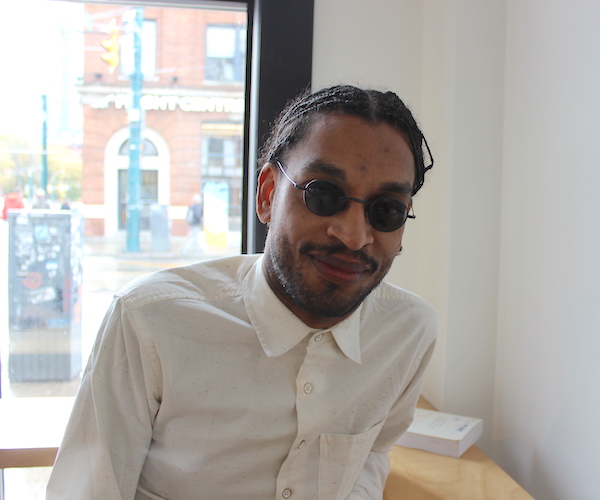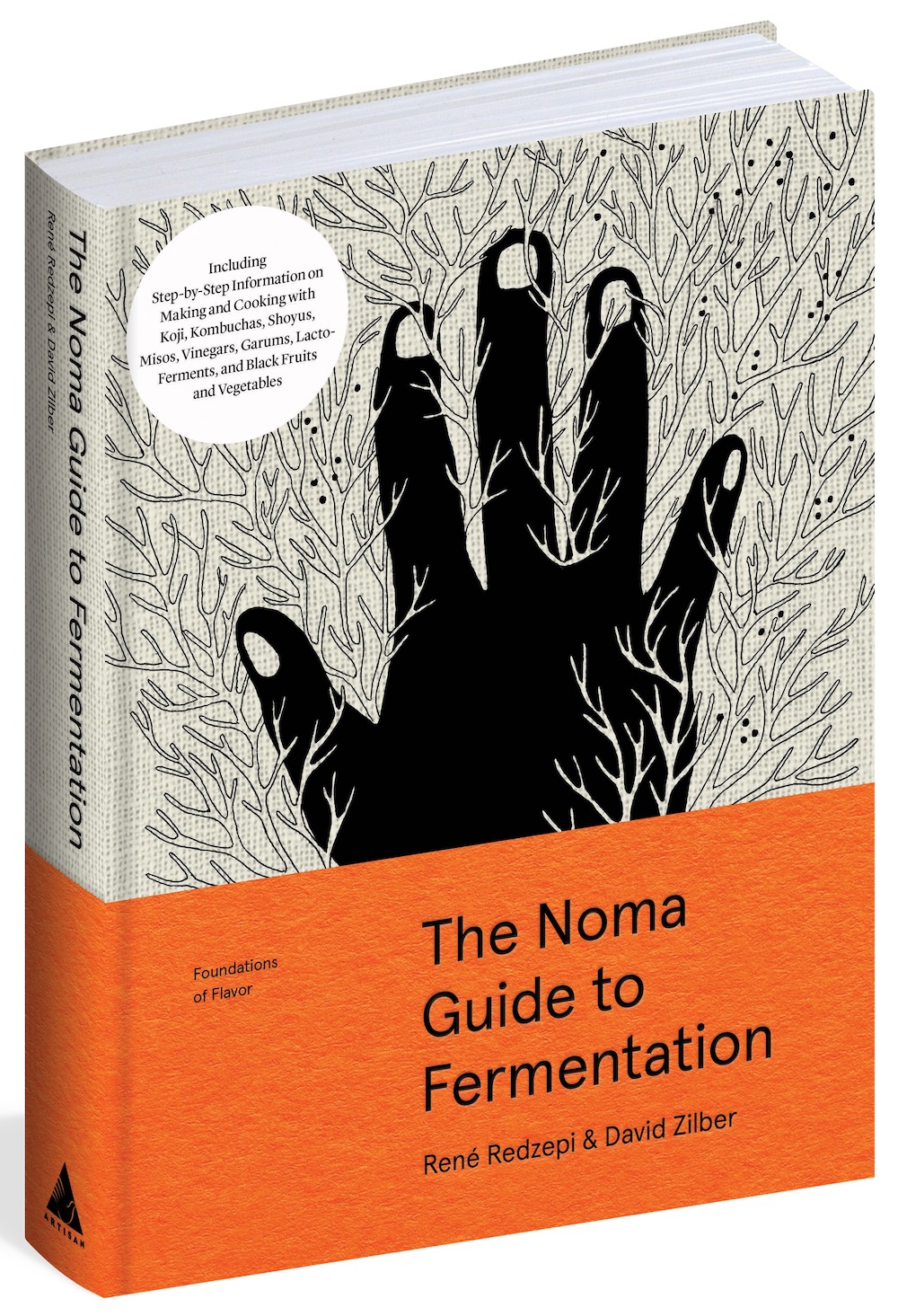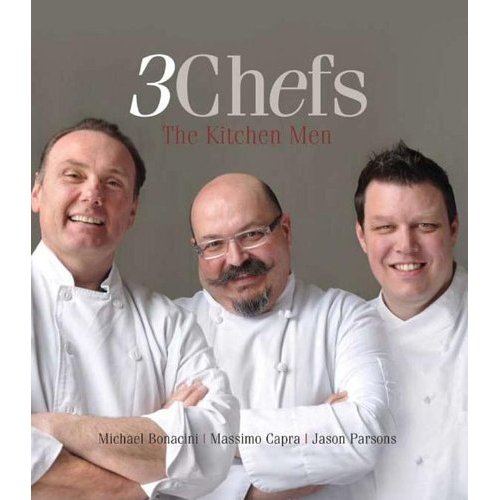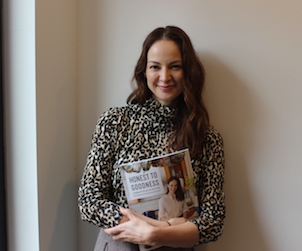Malcolm Jolley talks to Toronto native David Zilber about Fermentation at Noma.
Toronto-raised chef David Zilber sent his resumé to the most famous restaurant in the world and a few years later has his name next to the most famous chef’s name in the world on the cover of The Noma Guide to Fermentation. Zilber has established himslef as the head of Noma’s fermentation lab, and has written with Redzepi a very chefy, food nerdy, and fascinating book about cooking with microbes. I sat down with him, on a stop in his native city during the book tour he and Redzepi embarked on this past autumn, to ask him about how he ended up in the kitchen at Noma, how he transitioned to the lab and what the book and his work is all about.
This interview has been edited for length, clarity and style.
Good Food Revolution: I’d like to know how you ended up at Noma, and as head of fermentation, of all things. Before you went there, you were cooking at Hawksworth in Vancouver, right?
David Zilber: Yes, I’d put in time there. I had agreed to work for three years, and I was coming up to three and a half and decided it was time to broaden my horizons a bit. This was in 2014, and people began to know who I was and what I could do in a restaurant, so I was starting to get offers to either open my own restaurant or take a job as a chef de cuisine, but I honestly thought the I wasn’t fully prepared yet. I had more to learn. I could be more refined, and more confident. So, I was ambitious and thought I’d go for the best of the best. I wanted the best in Canada, so now I was going to go for the best in the world. So, I sent out three resumés, to English speaking kitchens (that was a deciding factor): Alinea and Saison in the States and Noma in Denmark. Noma got back to me, and the other two were mum, so I thought this is not a bad place to land.
Good Food Revolution: I guess not! So, then what happens? Do you get on an airplane?
David Zilber: They invited me over for a trial. Noma is not going to hire someone blind, without getting them in the kitchen first, so I went over for two weeks. It must have been April. I just tried to keep my head down and work hard. I remember a conversation with my future boss, [chef de cuisine] Dan Giusti, who said, “I watch you watch other people’s mistakes and you don’t make them: that’s the sort of person we need here.” So, I started and it was a fucking struggle. It was the hardest thing in my life to work in that kitchen for the first six months.
Good Food Revolution: I guess the stress levels are pretty high.
David Zilber: It’s cutthroat and unforgiving. If things aren’t right, tough luck: just get it done. The time pressure, the crunch, perfection…the military style of leading, it was controlled chaos every day. There’s always something exploding in a corner. There’s no normal day of work at Noma. Or, at least in the old Noma. We’ve probably found better routines and better systems in the new restaurant. Anyway, I did it.
Good Food Revolution: Ok, so how do you go from the kitchen to the fermentation lab?
David Zilber: I worked in the kitchen through the rest of 2014. Then, we moved over to Japan for the first Noma pop-up. That was interesting timing, but I had been at Noma to figure out what to do, and what not to do. So when all of a sudden we were thrown into a blender, and the whole kitchen was shaken up, in a whole new place, starting from the ground up, I realized my job had also changed. It was in Japan that I proved myself and showed that I can cook.
Good Food Revolution: Redzepi’s kind of crazy, right? I mean he just decides one day to move his restaurant to Japan or Mexico…
David Zilber: He aims high.
Good Food Revolution: But he seems to enjoy a bit of chaos?
David Zilber: Absolutely. It fuels the restaurant; in the best way. It creates an energy that’s irreplaceable. There other good restaurants but when Noma is firing on all pistons, it’s a unique sort of magic. People feel it, people know. Anyway, getting back to the lab, we got back from Japan and at some point Dan said, “We need to have a chat after service.” He told me that he, and René and Lars [Williams], Arielle [Johnson] and the people who worked in the [Nordic Food Lab] all though that I was the right guy to go over there and help with production, to be a sous chef but in a senior position.
Good Food Revolution: And where is there? Because it’s not part of the restaurant, right?
David Zilber: It was a stack of shipping containers in the parking lot behind the old Noma. [Laughs.] DIY but it worked. It was magical and the only place like it on Earth. It was built the same year that I arrived at Noma, in 2014, and as a cook in the kitchen it was considered to be this big ivory tower, and we didn’t have access to all things that went on behind the scenes there. I was always very curious about the lab. I never had time to really follow-up on that, but whenever I could I would try and ask Lars questions where I’d try and dig a little bit deeper than what I had figured out in my head. I think he kind of clued into my curiosity, and that I might have been the right person for the job.
Good Food Revolution: Other than making this pretty amazing cookbook, what was the job?
David Zilber: Everything in the cookbook was the job. That’s what Noma does.
Good Food Revolution: So would the chefs tell to just go and figure out how to do something?
David Zilber: Yes, absolutely. “Hey Dave, first project: try and figure out how to make barley wine.” And you try, and you try. You realize that it doesn’t work right, so you understand why it doesn’t work right and you learn something.
Good Food Revolution: Were you particularly interested in fermentation? Pickling things?
David Zilber: Not particularly, but as much as any other chef. As much as any other chef who wants to know how to make good bread. It’s just a part of cooking, so it’s something you think, oh that’s something I should know more about. And to specialize, to get to know something really well, you have to take yourself outside of the every day. For instance, I wouldn’t know as much as I do about charcuterie if I hadn’t spent a few years working at The Healthy Butcher. So, I just saw fermentation as an interesting challenge.
Good Food Revolution: Fermentation as a kind of cooking, which I think it is, seems to be having a moment, right? I mean the timing of the book seems perfect.
David Zilber: It’s cooking; it just happens more slowly.
Good Food Revolution: And there are far more kinds of fermentation that I would have thought. I assumed that fermentation was always just yeast eating sugar, not that I’d thought much about it.
David Zilber: In a strict scientific sense, fermentation is alcoholic, anaerobic fermentation: sugar to alcohol via yeast. But that doesn’t do justice to the whole world of cooking with micro-organisms. So we’ve broadened it to the transformation of one food into another via a microbe. That microbe could be yeast, it could be fungus or it could be bacteria, of all kinds of varieties. Every chapter in [The Noma Guide to Fermentation] delves into each kind, sometimes compounding them, sometimes talking about the way all kinds of fermentation play into a finished product, like miso. And sometimes we look at fermentation for very specific processes like garum, shoe or koji.
Good Food Revolution: Garum is the ancient Roman fish sauce, but your definition of it is broader than just fermented anchovies and salt, for instance.
David Zilber: Yes, we tend to expand definitions and ask what else can you autolyze, or break down on its own.
Good Food Revolution: Is that a polite way of describing rot?
David Zilber: No! Absolutely not! I go to great lengths in the book to explain the difference between rot and fermentation. Rot is a club where everyone gets in; it’s a free for all. As a fermenter, you’re like the doorman with the velvet rope only letting in the microbes you want to populate the club. That’s how you get a fun party instead of a debacle.
Good Food Revolution: But to find them requires trial and error?
David Zilber: Of course. It’s trial and error in the lab when we try and understand how to control these microbes, just like it’s been trial and error for the entirety of human existence. Fermentation has always been this slow, organic knowledge production. When things succeed, tradition keeps them very pure, and the knowledge is handed down. There are still many recipe we use today that were invented thousands of years ago.
Good Food Revolution: How do things get from the lab to the kitchen proper?
David Zilber: Well, we’ll run a bunch of experiments in the lab and if we end up with a product we like, that’s unique, and we think is good enough, we’ll take it over to the test kitchen. Maybe it’s a little cup of it and we’ll ask if they want to taste it, and explain what it takes to produce it. It’s almost like we’re salesmen trying to get it into the restaurant.
Good Food Revolution: You must be pretty good salesmen, or make very good things, because my understanding is that there’s actually a lot of fermented food not he plates these days at Noma. And the fermentation lab didn’t happen by mistake, so there must be demand for what you come up with.
David Zilber: Absolutely. We’re busier than ever. When I started in the lab there was a handful of products that we would make in any quantity. Now we make a great variety of ferments in greater quantities than we did before.
Good Food Revolution: Is part of what you do driven by season?
David Zilber: Yes, a lot of what we do in the lab is about seasonal preservation. We take in hundreds of kilos of strawberries in the summer. We work hard to can the seasons when they’re at their peak.
Good Food Revolution: Why would you write this book, The Noma Guide to Fermentation, with all the secrets of the world’s most famous, if not the best restaurant and send it out in the world to have all your rivals copy you? I imagine all these ambitious chefs and restaurateurs stealing all of your hard work.
David Zilber: [Laughs.] But it’s not stealing if you’re sharing. It’s not stealing if you give it away.
Good Food Revolution: Or, I guess if they buy the book.
David Zilber: Right. Then, it’s a transaction. And this was René’s idea. We asked him how much he wanted to put out, and he said, “Everything. Do it like we do it.” It really is about sharing knowledge. And it’s true that we’re not stumbling into new flavours at the same rate that we did when we started this. Then, everything was new. The first thing in every chapter of the book was a revelation that deeply impacted the menu because we were so excited about it. Now, we’re accustomed to these flavours and it doesn’t seem so new, so René thought that was the perfect time to get it all down and put it out there. At the back of the book we ask readers to tag us with #nomaferments so we can see their work. Which is a way of outsourcing our R&D. If everyone’s doing it and getting creative, then maybe we’ll see something we haven’t thought of.
Good Food Revolution: Open source.
David Zilber: It is, and it’s happening – not in a small way. Every morning I get up and I check the hashtag and it’s wild. There posts from other restaurants that I admire, other chefs going for it, it’s incredible.









